Da Nang is titled “Asia’s leading festival and event destination” by the World Travel Awards or Vietnam’s greenest city by the WWF. Its reputation comes from amazing natural mountain-to-sea sceneries, richness of local culture and magic transformations in recent decades. Getting to it and getting from it are both convenient thanks to the availability of airport, port, bus and train stations in its heart. For that reason, there is no surprise that 6,8 million visitors come to explore it in the peak year. So, a visit here is really worth it, but when is the best time to visit Da Nang? This article will answer not only the overall city, but also famous places to see around its proximity.
Read also:
- Da Nang Monthly Weather
- Best Things to Do in Da Nang
- What to Do in Da Nang for 3 Days
- Best Time to Visit Hoi An
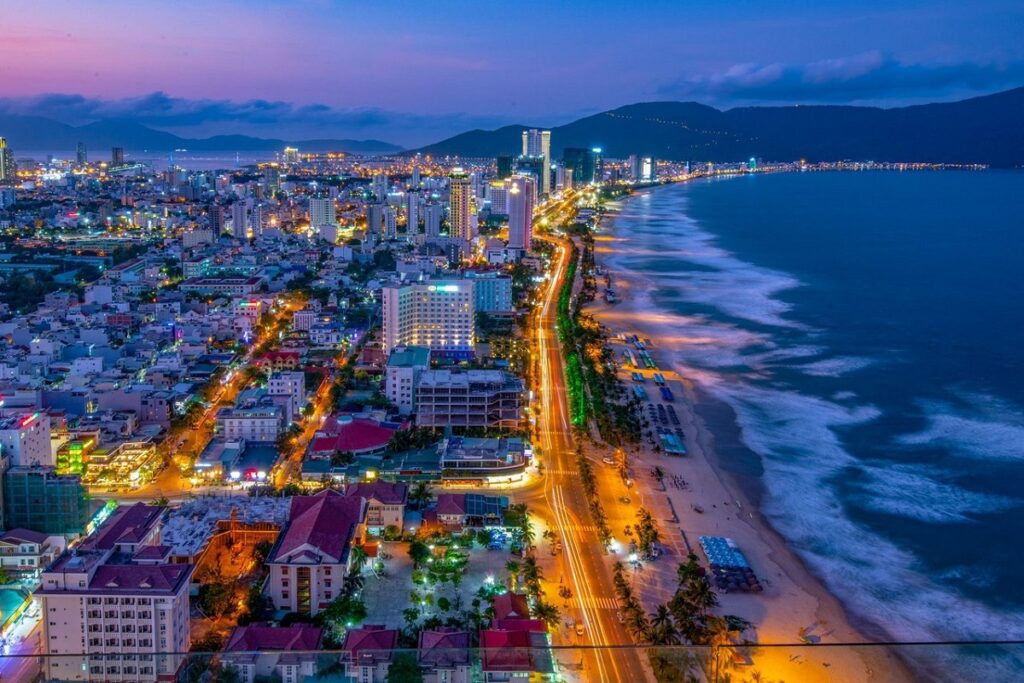
Table of content
- 1 The Best Time of the Year to Visit Da Nang Vietnam
- 2 The Best Time of the Seasons in Da Nang
- 3 The Best Month to Visit Da Nang
- 4 The Best Time to Visit Da Nang’s Marble Mountains
- 5 When is the Best Time to Visit Da Nang Beaches?
- 6 The Best Time to Visit Da Nang’s Golden Bridge (Ba Na Hills)
- 7 The Best Time to Visit Ba Na Hills
- 8 The Best Time to Visit the Lady Buddha (Linh Ung Pagoda)
- 9 The Best Time to Visit My Son Sanctuary
- 10 The Best Time to Visit Hai Van Pass
- 11 The Best Time to Visit Da Nang’s Festivals
- 12 Related Posts
- 13 Non Nuoc Beach: The Famous Beach of Da Nang
- 14 How to Get from Da Nang to My Son Sanctuary
- 15 Bach Ma National Park: Hiking, Trekking in Da Nang and Hoi An
- 16 Am Phu Cave Complete Travel Guide
- 17 Asia Park and Sun Wheel in Da Nang (Sun World Da Nang Wonders)
- 18 How to Get to Golden Bridge from Da Nang
- 19 Da Nang Food Specialties: What to Eat in Da Nang
- 20 How to Visit Golden Bridge Vietnam
- 21 Da Nang Shore Excursions: Guided Tours From Tien Sa Port
- 22 Han Market (Cho Han): Where to Shop in Da Nang?
- 23 Da Nang Cathedral (Da Nang Pink Church)
- 24 Things to Do in Ba Na Hills Besides Golden Bridge
- 25 Da Nang Half Day Tours
- 26 Da Nang Private Car and Driver
- 27 Da Nang and Hoi An Itinerary for Visitors Staying Overnight in Hoi An
- 28 Da Nang Things to Do: Guide to What to Do in Da Nang Vietnam
- 29 Da Nang Best Things to Do and Reasons
- 30 How to Get From Hoi An to Da Nang
- 31 Hoi An or Da Nang: Which is Better?
- 32 My Son Sanctuary Tour
- 33 Da Nang Best Area to Stay: Guide to Where to Stay in Da Nang
- 34 Da Nang Cave Tour: Best Underground Activities in Da Nang
- 35 Da Nang Best Time to Visit: Guide to Best Weather in Da Nang
- 36 Da Nang Weather by Month: Guide to Monthly Weather in Da Nang
- 37 What to Do in Da Nang At Night
- 38 Lang Co Vietnam Travel Guide
- 39 What to Do in Da Nang for 3 Days
- 40 My Khe Beach: A Complete Guide to Da Nang’s Best Beach
- 41 Da Nang Day Trips: Guide to Best Day Tours From Da Nang
- 42 Museums in Da Nang
- 43 Linh Ung Pagoda: Trio of Da Nang’s Holiest Mountain Temples
- 44 Da Nang Night Market: A Thing To Do in Da Nang at Night
- 45 Guide to Son Tra Mountain aka Monkey Mountain Vietnam
- 46 Ba Na Hills Tour
- 47 Da Nang Cable Car
- 48 How to Get from Da Nang Airport to Hoi An
- 49 Da Nang to Hoi An: Best Da Nang Airport Transfer and More
- 50 Hai Van Pass Da Nang: Map, Route, Weather, History, Tour
- 51 Da Nang Attractions Guide: What to See in Da Nang Vietnam?
- 52 Lady Buddha Da Nang: The Best of Monkey Mountain Vietnam
- 53 My Son Sanctuary Travel Guide
- 54 Da Nang Museum of Cham Sculpture
- 55 Dragon Bridge Da Nang: The Fire-Breathing Da Nang Bridge
- 56 Ba Na Hills Travel Guide: A First Timer’s Complete Guide
- 57 Golden Bridge Da Nang: A Guide to The Iconic Da Nang Bridge
- 58 Da Nang Bridge: A Guide to Famous Bridges in Da Nang
- 59 Ba Na Hills Cable Car: World Record, Cost, Reschedule, Map
- 60 Da Nang Mountain Temple: Marble Mountain’s Pagodas, More
- 61 Da Nang Caves: Underground World of the Marble Mountains
- 62 The Marble Mountains: Guide to Da Nang’s Iconic Mountain
- 63 Featured Tours and Experiences
- 63.0.1 Golden Bridge and Ba Na Hills Night Tour
- 63.0.2 Golden Hands Bridge Tour In Sunrise or Sunset (1/2 Day)
- 63.0.3 Cam Kim Island Bicycle Tour From Hoi An
- 63.0.4 Cham Island Tour From Hoi An (Group Tour)
- 63.0.5 Cham Island Tour From Da Nang (Group Tour)
- 63.0.6 Hoi An Vegetarian Food Tour
- 63.0.7 Hoi An Evening Walking Food Tour Through Laneways
- 63.0.8 Private Hoi An Basket Boat Tour (Shuttle Bus, Bicycle, Bike)
- 63.0.9 Half-day Am Phu Cave Tour (Private)
- 63.0.10 Hoi An Countryside Tour (Bicycle, Car, Electric Shuttle)
- 63.0.11 Da Nang Tour Package From Singapore
- 63.0.12 Hoi An Evening Tour From Da Nang
- 63.0.13 Hoi An Walking Food Tour Through Laneways
- 63.0.14 My Son Sanctuary and Hoi An Old Town Tour with Thu Bon River Cruise
- 63.0.15 My Son Day Trip From Hoi An including Marble Mountains and Basket Boat
- 63.0.16 Half Day Hoi An City Tour With River Cruise
- 63.0.17 Son Tra Peninsula Tour with Marble Mountains (Private/Small Group)
- 63.0.18 Hue Day Trip From Hoi An with Hai Van Pass, River Cruise & Lunch
- 63.0.19 Hoi An Ancient Town and Countryside Tour (Bests of Hoi An Tour)
- 63.0.20 Hoi An Tour From Da Nang Airport (Private, Optional Lunch)
- 63.0.21 Hoi An Day Trip From Da Nang (Marble Mountains, Basket Boat, Old Town)
- 63.0.22 Da Nang City Tour From Airport (Private, Optional Lunch)
- 63.0.23 Hoi An City Tour with Lantern Class, Lantern Boat, Night Market & Local Food Sampling
- 63.0.24 Marble Mountains, Basket Boat Ride & Hoi An Old Town Walking Tour
- 63.0.25 Marble Mountains & Golden Bridge Day Tour with Buffet Lunch
- 63.0.26 Marble Mountains & Monkey Mountain Tour (Half-day, Private)
- 63.0.27 Private Golden Bridge Sunrise Tour (Half-day, Optional Lunch)
- 63.0.28 Hoi An Ancient Town & Golden Bridge Day Tour (Private/Small Group)
- 63.0.29 My Son Sanctuary & Golden Bridge Day Tour (Private/Small Group)
- 63.0.30 Private My Son Sanctuary Sunrise or Sunset Tour
- 63.0.31 Full Day Hoi An Ancient Town & Countryside Experience With Local
- 63.0.32 Full Day My Son Sanctuary & Hoi An Countryside Tour With Local
- 63.0.33 Full Day Hoi An Ancient Town & Coconut Village Experience
- 63.0.34 Son Tra Peninsula, Marble Mountains and Hoi An City Tour
- 63.0.35 Half-day Marble Mountains Tour from Da Nang or Hoi An
- 63.0.36 Da Nang Cave Tour (Half Day Underground Tour in Da Nang)
- 63.0.37 Hoi An Old Town & Lantern Making Class (Morning Tour, Half-day)
- 63.0.38 Full Day Bests of Da Nang & Hoi An Old Town Walking Tour
- 63.0.39 Full Day My Son Tour From Da Nang with Da Nang City Tour
- 63.0.40 My Son Sanctuary Tour From Hoi An or Da Nang With Local Guide
- 63.0.41 Hue Day Trip from Da Nang or Hoi An via Hai Van Pass with Lunch
- 63.0.42 Full Day Golden Bridge & Ba Na Hills Tour With Buffet Lunch
- 63.0.43 Full Day My Son Sanctuary Tour & Hoi An Old Town With Local
- 63.0.44 Half Day Da Nang Museums and Bridges
- 63.0.45 Da Nang City Discovery
- 63.0.46 Da Nang at a Glance (The Best Half Day Da Nang City Tour)
- 63.0.47 Full-day My Son Tour From Da Nang or Hoi An & Marble Mountains
The Best Time of the Year to Visit Da Nang Vietnam
Da Nang has two distinct seasons in the year: the dry, from January to end of August and the wet from September to December. Compared to North Vietnam, these periods with the same weather begin 2 months later. See characteristics of each season in detail and tips in our guide to Da Nang weather. From October to December, typhoons are formed and may hit or largely affect the city, so called “typhoon season”.
The best time of the year to visit Da Nang depends on what travelers want to see, do and experience. If looking for a sunny beach holiday, booking a flight in the span from mid-February to the beginning of the rainy season in September. The hottest months are from June to August, featuring a very high temperature and UV index, so sunbathers may have a shorter visit than earlier and later times. It’s also the best for outdoor adventures and underwater activities because the natural sceneries are at their best. However, the strong midday heat is a concern. In the rest of the year, the temperature decreases a bit but the atmosphere is more humid. It rains more frequently (more than 20 days a month), coupled with dark skies and local floods on the streets. Without much rain, travelers can enjoy the coolest period and relax.
On the other hand, there are two other famous tourist cities in Da Nang’s proximity (called the Central Vietnam), Hoi An and Hue. Both are Unesco world heritages, attracting some millions of visitors yearly. So, the best time to visit Da Nang also depends on the itinerary which is tailored for at least 2 destinations. Read the article for Hue’s weather and Hoi An’s weather for further information.
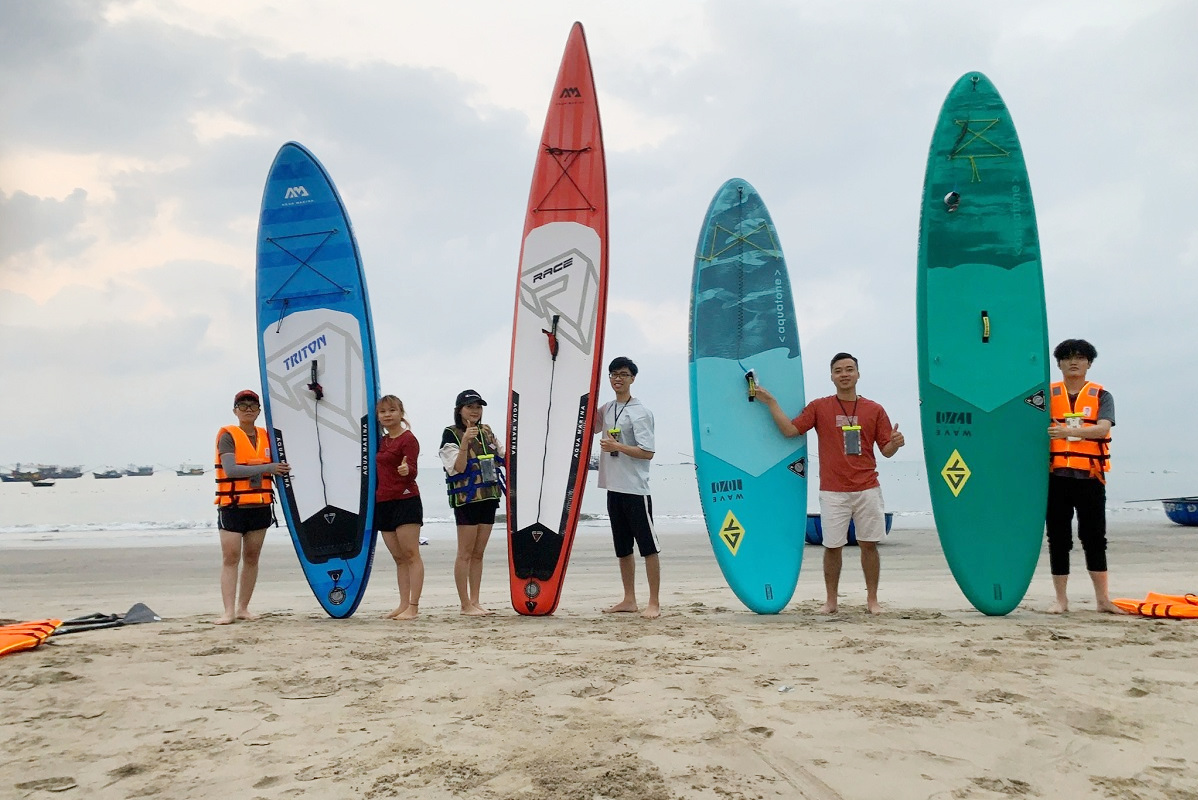
The Best Time of the Seasons in Da Nang
Da Nang Dry Season
The dry season in Da Nang is from January to August. During these months, the temperature is 25,5oC on average, and reaches its peak in June, July and August. In the hottest period, the real feel may be up to 40oC. Sunny hours are many, starting from the sunrise at around 5:30 a.m and ending with a sunset at around 6 p.m. Skies are nearly always clear, blue and with white clouds. Due to lower temperature, travellers prefer a couple of weeks between January and May. However, two long Vietnamese holidays, the New year festival and the Reunification Day cause an significant increase of travel prices, overbooking of hotels and crowds anywhere. So, the end of February to mid-April may be the best.
Da Nang (Rain) Rainy Season
The wet season in Da Nang begins in September and ends in December. Month by month, it rains more than 20 days and the rainfall rises to the highest rates of the whole year. On many days, the sunlight hours are just around 3. Typhoons may occur from October to December, causing pouring rains, gusty winds, big sea waves and local floods. The sun with full face, light sunshine and clear skies can be expected, between heavily rainy days. Domestic travellers often don’t travel much during this time, and instead, there are millions of foreigners landing to enjoy the holiday (if without typhoons). In the Christmas and New year days, the pace of life becomes more vibrant and graceful. So, when the downpour doesn’t come yet and ends (early September, late December), break time between rainy days may be the best.
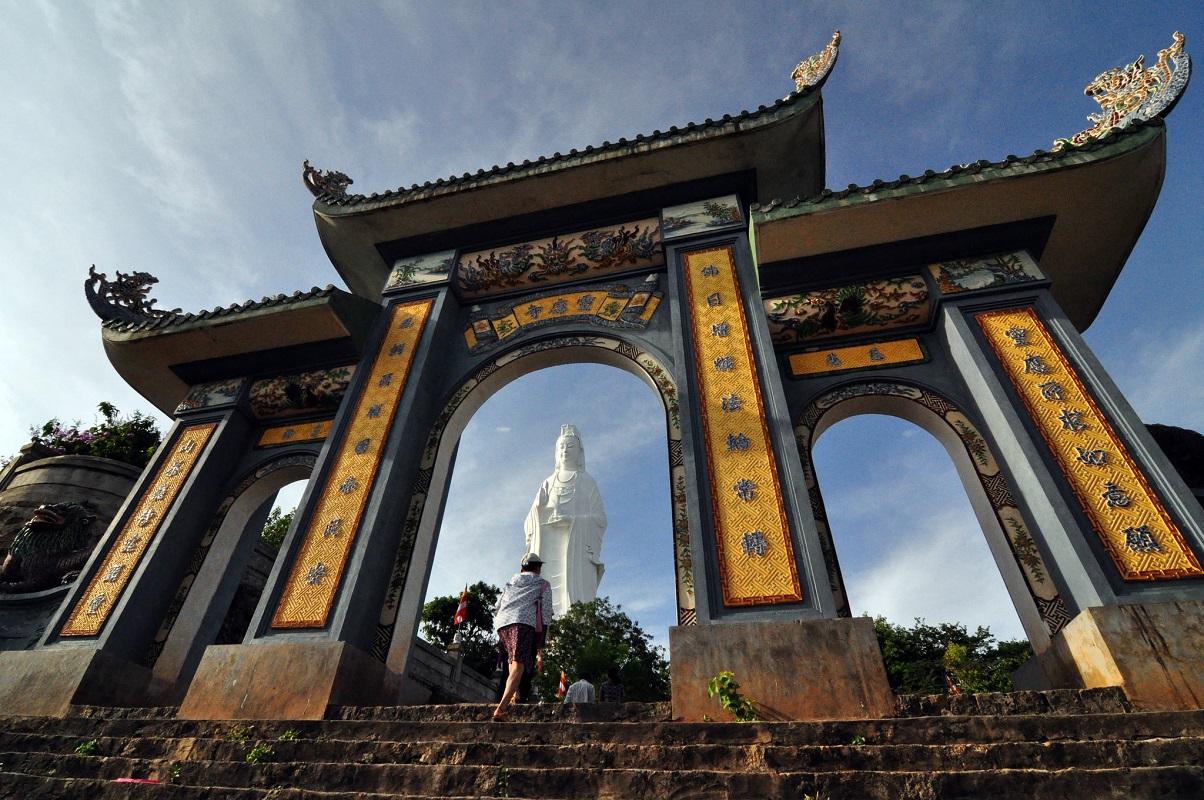
The Best Month to Visit Da Nang
The best month to visit Da Nang is March and April or September. If traveling in March and April, visitors will avoid one of the most costly times and hottest times. Average high-temperature is 35oC and low-temperature is 26oC. Because it is still in the dry season, it provides all a beach holiday needed. There are sunny days with blue skies, dry and white sands, warm and clear water, gentle waves and opportunities to participate in water sports. Seafood is freshest, most diverse during these months. In September, the heat slows down and heavy rains don’t occur, making it ideal for sightseeing. Read our comprehensive guide to Da Nang’s weather month by month for more details.
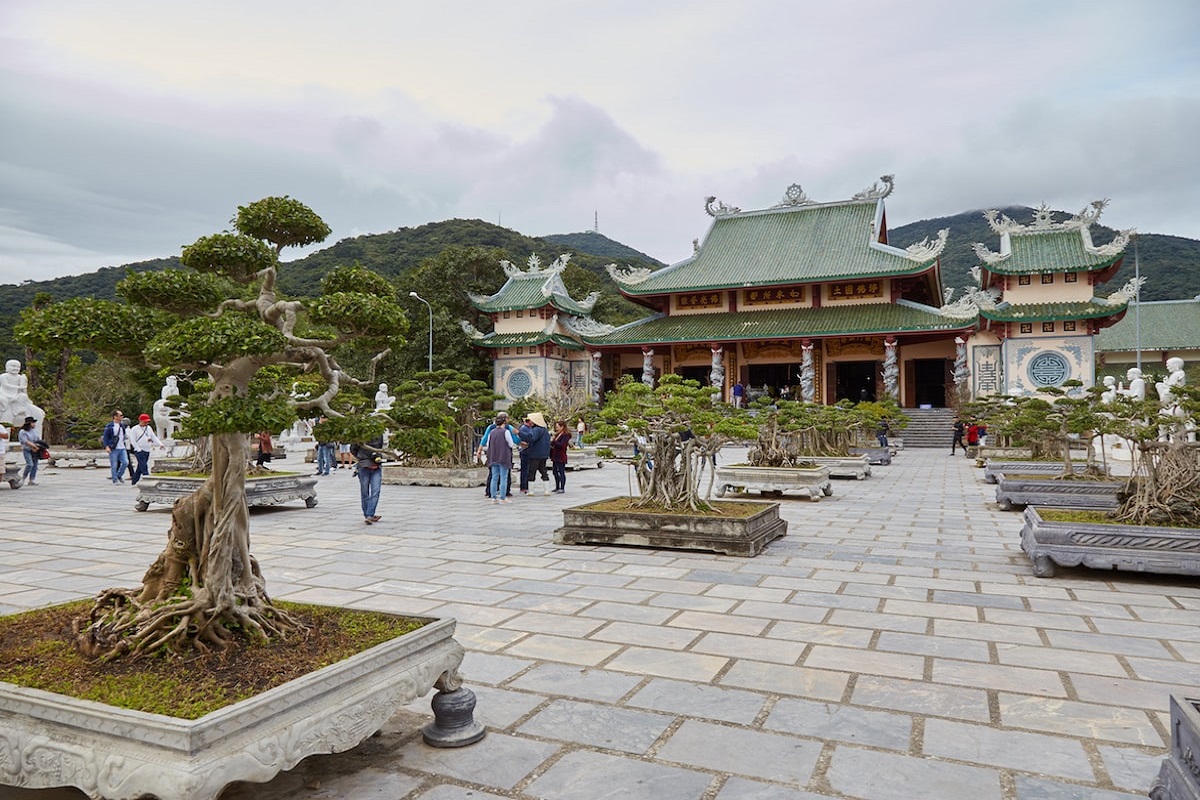
The Best Time to Visit Da Nang’s Marble Mountains
The Marble Mountains (Ngu Hanh Son) is a group of 5 scenic marble hills not far from Da Nang’s river bridges. It’s famous nationally for impressive caves, old temples, and unique formations that are pieces of a broken dragon egg in the legend. Opening from 7 a.m to 5:30 p.m, visitors have to climb some hundred steep steps to see different sights at the top of this top attraction. Good shoes and comfortable outfits are always necessary. Due to being a Buddhist sanctuary, a dress code is regulated, see details here.
The best time to visit the Marble Mountains are from March to May, and in September. In these periods, travellers can avoid crowded and expensive February (due to the Vietnamese new year), the warmest months (June to August) and the wet season. Between March and May, the temperature increases steadily and slowly, and every day, it reaches the peak at noon. Therefore, domestic tourists often don’t visit the mountains at that time. The most ideal sightseeing is in the early morning. Late afternoon is also okay, giving a chance to watch sunset down the horizon. Not only the heat, it’s perfect to be away from crowds who often come before and after the lunch. However, to catch the moment light falls inside the caves, photography lovers should be there while the sun is high.
From October to December, it rains three weeks a month on average and the possibility of typhoons is high. Except for a cooler temperature than previous times, other conditions are not too great – the skies are cloudy, steps and cave floors are wet and slippery. If you expect good natural light for photography, check the weather forecast and choose the day of most sunshine hours.
Highly recommended: Travel guide to The Marble Mountains
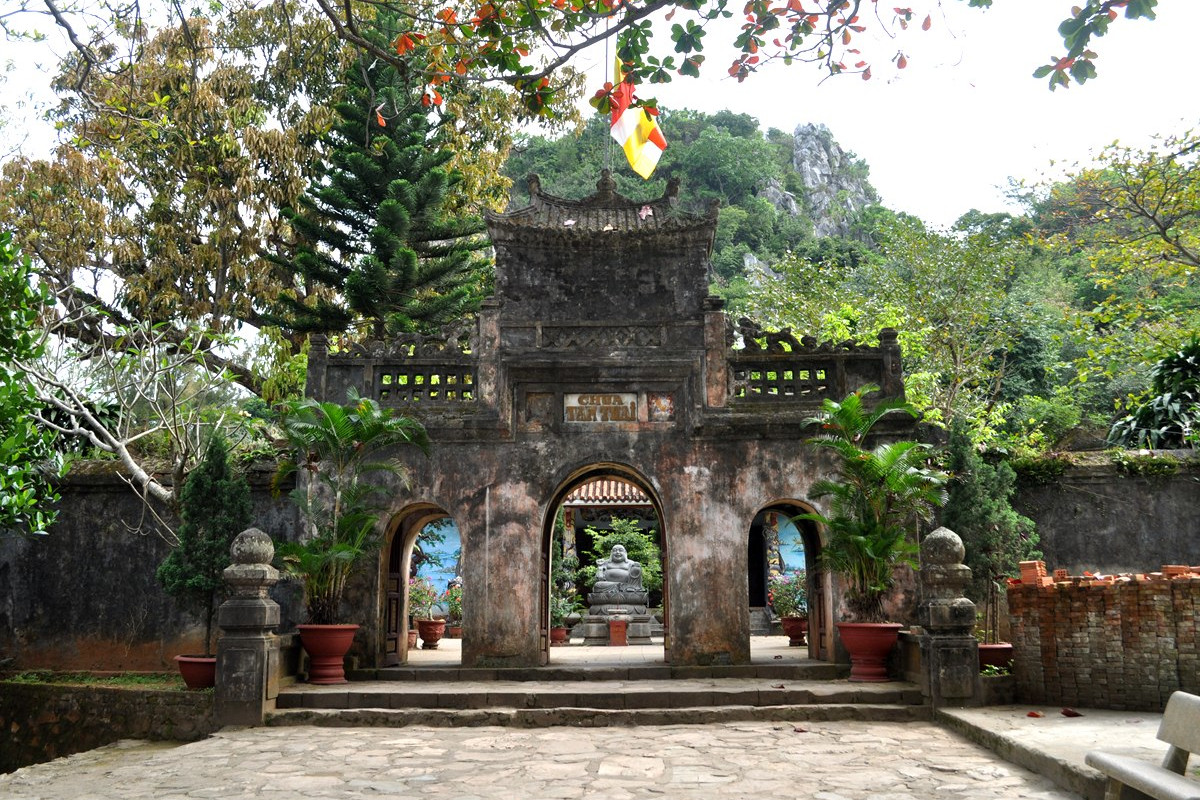
When is the Best Time to Visit Da Nang Beaches?
Da Nang’s coastline is long and consists of a variety of beaches on it. There are lengthy strips of sand along warm water, crescent beaches at the foot of green mountains, stone beaches by the coral reefs and coves hidden away in the jungles. The most visited places are My Khe Beach and Non Nuoc Beach (especially jet setters). See information about all beaches in our guide to beaches in Da Nang.
A wonderful beach pilgrim needs lots of sun, warm water to swim and dry sands to lounge under coconut palms. That all travelers can find from January to September when the rains don’t pour yet and the typhoons don’t cause bad weather. However, this time of the year has some local holidays in which the popular beaches are so packed. There are Tet New year festival (late January/early February), Reunification day (late April/early May) and Independence day (early September). To avoid the crowds, travelers can go to non-touristy beaches in Nguyen Tat Thanh bayfront, private beaches in resorts, hidden gems or visit in “shoulder seasons”. The off-peak periods are mid-February to April, and August to mid-September. Prices are not too expensive like Vietnamese holidays and too humid like May to July.
May, June and July are the hottest months of the year, so if don’t have another time to travel, follow the reschedule of local goers: early morning and late afternoon. Not only to avoid intense rays that harm skin and body, travellers may love brilliant sunrise and sunset. That is for swimming, sunbathing and water sports, if tending to have a stroll along the water edge with bare feet, the evening is also very nice. Read My Khe Beach guide to know the best bars to get a cocktail.
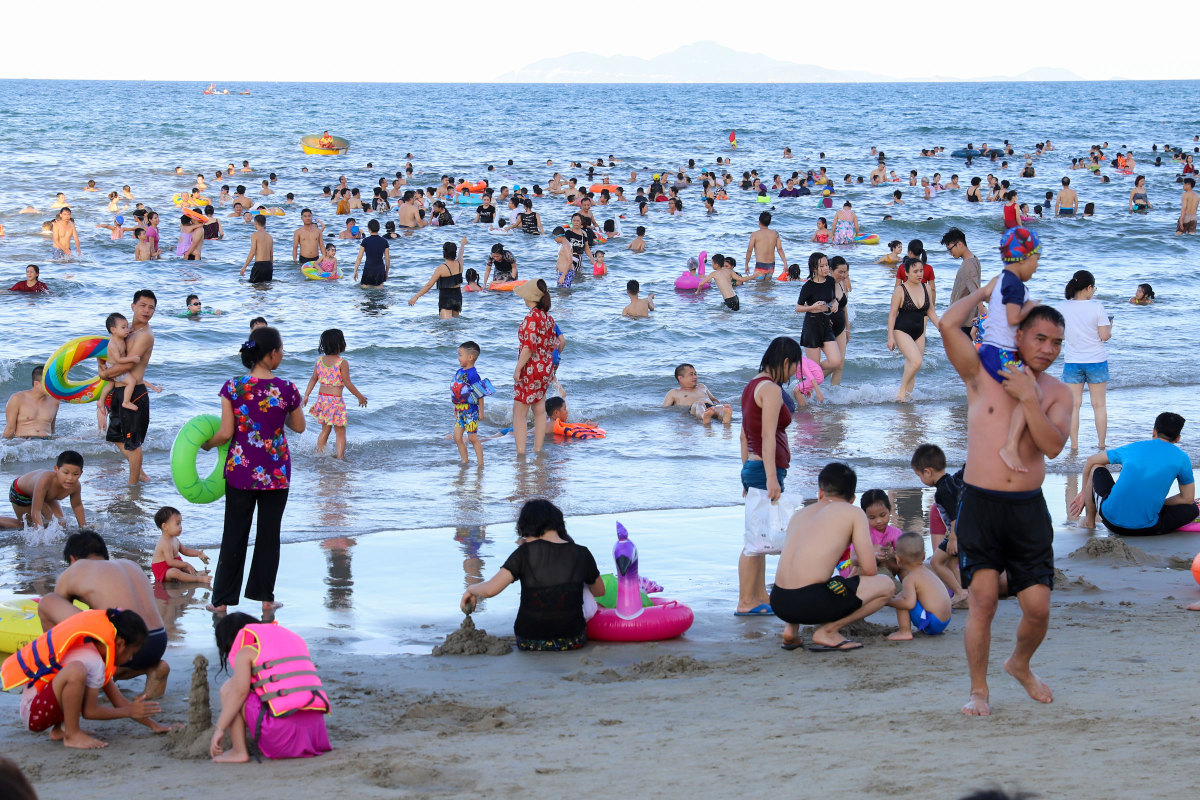
The Best Time to Visit Da Nang’s Golden Bridge (Ba Na Hills)
The Golden Bridge (Golden Hand Bridge, Hand Bridge, Cau Vang) is in the Ba Na Hills, a hill station and entertainment complex. See the best time of the year to visit it here (same article). Although constructed in 2018, this has become a new wonder in Vietnam, and known by every instagrammer all over the world. It has two huge hands holding a golden-plated pedestrian passage, jutting out from the jungle-covered mountain. One of the world-record Ba Na Hills cable cars carry visitors straight to here, browse our guide to know its reschedule.
The best time to visit the Golden Bridge in Da Nang is when it’s sunny and without dense fog. These conditions allow visitors to see and photograph with the whole bridge and hands, and view picturesque surroundings. The morning and noon often meet both, but the crowd is a problem that may face and struggle (to seek good spots to take photos). If see so many people, visitors can decide to go to other areas and come back later when the bridge is much less packed. From 11 a.m to 2 p.m, buffet restaurants serve lunch for guided tours. It may be ideal to take your stroll in this mythical place. Of course, in the rainy season from September to October, almost any day is foggy, rainy and so wet. Views are blocked and the experience around is quite boring.
Note: Bring a selfie stick to deal with the crowds. From a height, your phone can take you, 2 hands and the bridge in one photo.

The Best Time to Visit Ba Na Hills
Ba Na Hills is a French-established hill station in the summit of Da Nang, Nui Chua at an elevation of 1,487 meters. Only 40 minutes drive is needed to get to its foot and around 15 minutes by world-record cable car to land the first sight. There are two main areas: the lower one filled by beautiful blooming flower gardens and the upper one, a French town with hotels, theme park and restaurants.
The best time to visit Ba Na Hills is from March to the end of August when the weather is most stable in the year. This time is characterized by many sunshine hours, low rainfall (dry) and without typhoons. During it, visitors will have a chance to feel 4 seasons in one day, the morning – spring, the noon – summer, the afternoon – autumn and the evening – winter. Thanks to a mountaintop location, the temperature is always kept around 20oC and 16oC at night. Opening hours are from 7 a.m to 9 p.m, so we suggest first timers go sightseeing before sunset and the evening is better for repeaters. The Hills are really famous, and no surprise that crowds and long queues are everywhere. Visitors should try to leave the hotel early, to avoid and have more time to do everything. In the last months of the year, fog covers it, making the tourist experience so poor. See more information in guide to Ba Na Hills.
Note: If possible, don’t visit Ba Na Hills during the Vietnamese public holidays because it’s so packed there. Long ones are Tet holiday (January/February), Reunification day (end of April/beginning of May) and Independence day (early September).

The Best Time to Visit the Lady Buddha (Linh Ung Pagoda)
Similar to attractions along the Da Nang coastline, the best time to visit the Lady Buddha is from March to September when it’s sunny throughout the day. The largest Buddhist temple of the city, Linh Ung Pagoda, is next to this super elegant sculpture. It owns very grand shrines, nicely-carved marble statues, and lots of bonsai trees on an immense paved ground. Visitors would like to wander around these famous places in the morning and after 3 p.m, to avoid the midday heat. If possible, sunrise and sunset are recommended, due to the mesmerizing beauty of nature and cool temperature. Light conditions are also most perfect, to take photos with buildings and panoramic sceneries. If aiming to be away from crowds, the evening is a proper choice. Keep in mind that the Buddha and pagoda open their doors all the time, no matter day or night. See more information in travel guides to Lady Buddha and Linh Ung Pagoda.
Highly recommended: travel guides to Lady Buddha, Linh Ung Pagoda, Son Tra Mountain
Note: If planning to discover the upper parts of the Son Tra mountain, check the weather forecast in advance. Don’t ride up there in heavy rains or typhoons, it’s dangerous. Read our rider guide here to see details.

The Best Time to Visit My Son Sanctuary
My Son Sanctuary is a world heritage site 45 southwest of Da Nang center core. It’s a complex of 70 Hindu temples and ruins dated from 4th to 13rd centuries, within a valley encircled by mountains. This religious site won the Unesco title due to its universal outstanding values. Especially, it’s the best example of civilization of the Champa Kingdom which ruled the Central coast until 19th century. Because abandoned for a long time, its natural surroundings are well-kept.
The best times to visit My Son Sanctuary may be in the dry season, from January to the end of August, September and December. During summer months, visitors can expect lots of sun, dry paths to wander around for sightseeing and possibilities to see beautiful sceneries. Morning and after 3 p.m are recommended to start the visit (leaving Da Nang one hour before) to avoid midday heat. There are not many Vietnamese guided visitors coming to My Son on public holidays, so crowds are just at sometimes. In September, the temperature is lower a bit and rains occur in the last weeks. Bringing a rain gear set if your day of exploration has a high chance of rain. In December, the heavy rainfall comes down slowly, and the sun appears more. It’s also nice to have a day out from the hustle and bustle of Da Nang.
There are several Cham shows held during the day, including festival music, dancings and playing instruments. Performed by artists wearing nice traditional costumes, it’s a must to watch. Therefore, the best time of the day to visit the holy land has to cover these performances. See the reschedule in our guide to My Son Sanctuary.
Note: My Son Sanctuary may be closed in typhoons (October to December), because of floods and visitor’s safety. See latest information if traveling in this span of time, in official webpage disanvanhoamyson.com or social medias (@mysondisanvanhoa – Facebook)
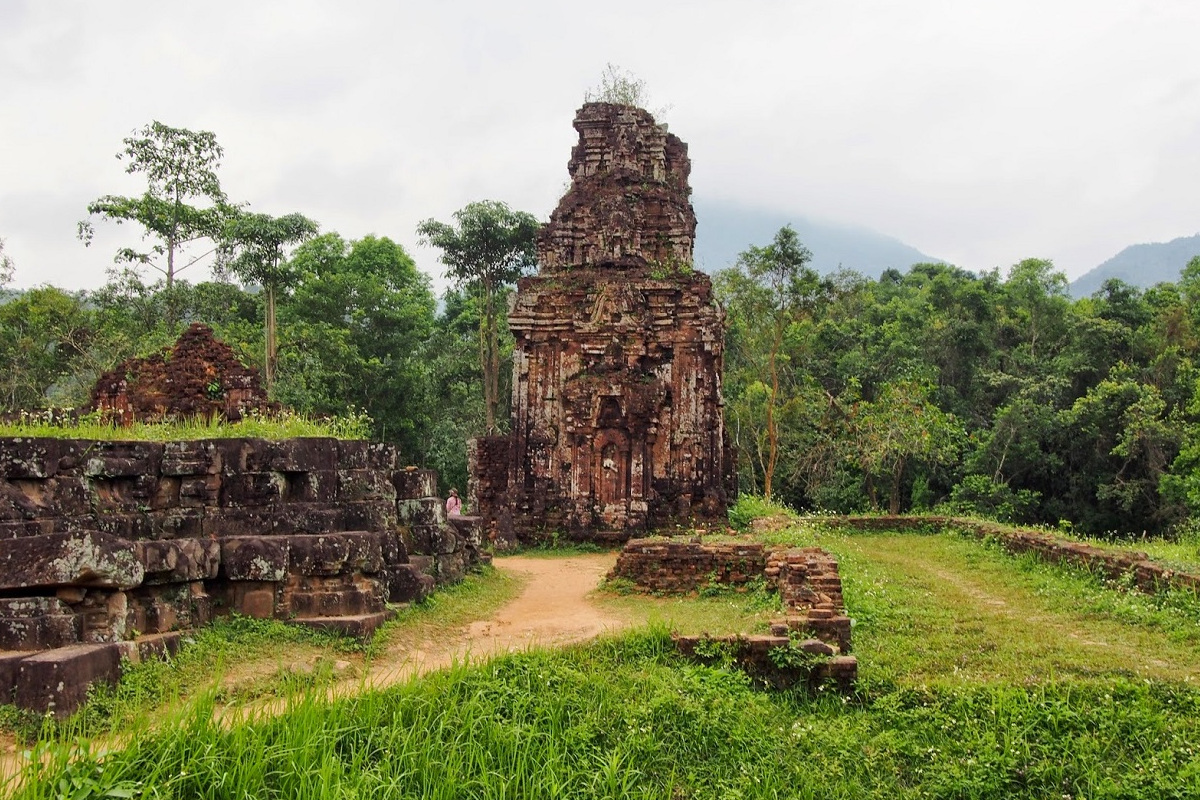
The Best Time to Visit Hai Van Pass
Hai Van Pass (Deo Hai Van) is a 20km-long stretch of 1A highway by the coast between Da Nang and Lang Co of Hue. It’s packed by picturesque outlooks, coupled with cool breezes from the sea, and fascinating rides up and down. The top of it is at an elevation of nearly 1,500 meters. There, a military stronghold with brick gates and bunkers are built, for national defense. For a long time, this joyful coastal route has been loved by motorbike riders, not just since Top Gear is broadcast.
The best time of the year to visit Hai Van Pass is when it’s still sunny, from January to September. During these months, the sun isn’t covered by dark clouds and the rainfall is minimal. Because of that, natural sceneries are full of bright colors and light is perfect for photography. Just for bike riders, the road is dry and non-misty. It is very ideal to cruise along the pass and enjoy a fascinating drive. From October to December, pouring rains and typhoons may cause dense fog, short foresight, wet road surface and dangerous situations. In guided tours, the driver often recommends getting to the other side of the ridge by the tunnel. Read more information in our guide to Hai Van Pass.
In the lower elevations than the pass route, there is a railway running along the coastline. An experience on it is cool, stunning and off the beaten path. The best stretch of track begins in the Da Nang train station and ends in Hue. Definitely, the best time to enjoy this special ride is when it doesn’t rain. See everything about Da Nang to Hue by train to know details.

The Best Time to Visit Da Nang’s Festivals
The most famous celebration in the year is the Da Nang Fireworks Festival. Its semi-final matches are held in June and the female is in the first week of July. These times have the lowest rates of rainfall, clear skies, light winds, and without high humidity, very ideal for eye-popping performances of lights. Every match is wonderful and worth it to see, not only the last one.
Quan The Am Festival is the largest traditional religion event, held yearly in the Marble Mountains. It lasts 3 days, from the 17th to 19th day of the second lunar month (March) and the main is the last. So, the best time to attend it is 19th day when the most exciting celebrations take place.
Like anywhere else across Vietnam, Tet (new year festival) occurs in one week in late January and early February. Due to being the biggest event, travelers have the chance to see a full of life city, from busy roads, chaotic markets, plenty of street decorations and colorful flowers, to smiles on the faces of locals. The atmosphere is joyful, optimistic, and filled with hope for a more successful year. If you are looking to see different slices of people’s life, visit the city sometime in the week before the countdown party and 3 first days of Tet are to know customs and practices. Traditionally, the 1st day is for the father’s family, the 2nd day is for the mother’s family and the 3rd day is for teachers. However, travelers may face sudden increase of prices, overbooking of hotels, crowds anywhere, and unstable business reschedule. Read all festivals during the year in Da Nang and reschedule in our article here.
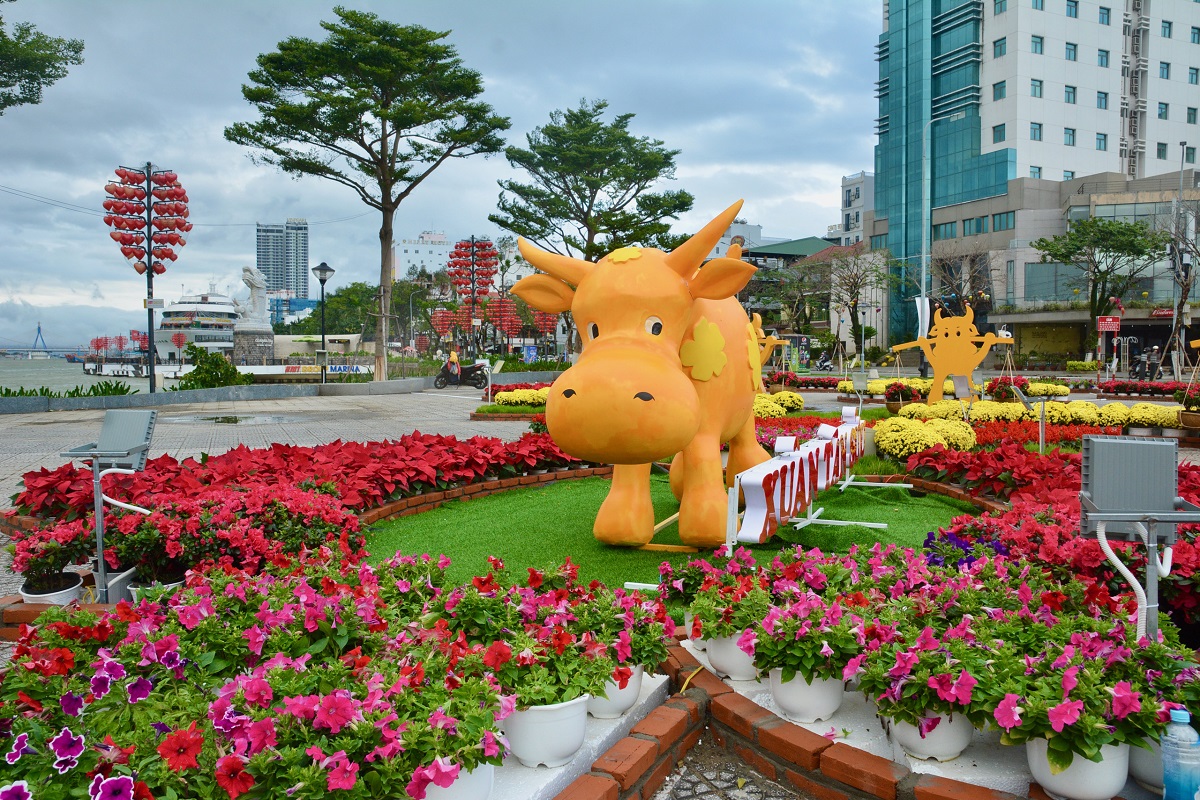
Related Posts
Non Nuoc Beach: The Famous Beach of Da Nang
Besides the Golden hands bridge – a global hit, Da Nang city also has beautiful beaches. If looking for somewhere great to stay and have a slow holiday, Non Nuoc
How to Get from Da Nang to My Son Sanctuary
Known as ‘the Angkor Wat of Vietnam’, My Son sanctuary boasts of its sophisticated temples dating back from 4th century. Sadly, in 14th century, it’s abandoned in the forests. Today,
Bach Ma National Park: Hiking, Trekking in Da Nang and Hoi An
Two best places for trekking and hiking in and near Da Nang are Son Tra mountain (peninsula) and Bach Ma national park. Which one is better is actually personal because these
Am Phu Cave Complete Travel Guide
Although in the Marble mountains – the most visited attraction in Da Nang, travelers often miss Am Phu cave. One of reasons is that it’s mentioned much online and not
Asia Park and Sun Wheel in Da Nang (Sun World Da Nang Wonders)
Have you ever seen the wheel of Da Nang? That is the Sun Wheel. It’s a part of greater Asia Park – an amusement park with a heap of fun
How to Get to Golden Bridge from Da Nang
The Golden Bridge (aka the Golden Hands Bridge) in Da Nang is a must visit attraction in Vietnam today. Many foreign travelers come to the city, just because they love
Da Nang Food Specialties: What to Eat in Da Nang
Da Nang is known as a food capital of central Vietnam. This city boasts many yummy dishes, prepared by distinctive recipes and some of them are famous all over the
How to Visit Golden Bridge Vietnam
The Golden Hand Bridge of Ba Na hills today is a dream place to visit for many travelers. Since it opened in June 2018, millions of people have set their
Da Nang Shore Excursions: Guided Tours From Tien Sa Port
Da Nang Vietnam today is one of stopovers for many cruises that travel from continent to continent, from country to country. It owns an ideal seaport to moor and it
Han Market (Cho Han): Where to Shop in Da Nang?
In the heart of Da Nang, the Han market is a popular place for visitors to buy something to bring home due to the diversity of merchandise. Back to history,
Da Nang Cathedral (Da Nang Pink Church)
Da Nang became a French protectorate on 3rd October 1888, under the name “Tourane”. By the Han river, the colonists designed a grid of streets with public buildings, a city hall,
Things to Do in Ba Na Hills Besides Golden Bridge
According to local authorities, 50% of visitors coming to Da Nang and Hoi An visit the Ba Na hills. In other words, that is nearly 10 millions of people. This
Da Nang Half Day Tours
In addition to day trips, travelers have many options of half-day tours in Da Nang to choose from. Not to spend a full day at different places, maybe far from
Da Nang Private Car and Driver
Your next holiday destination is Da Nang? You prefer to travel by yourself? Hiring a private car is one of the best options for you to explore with freedom, flexibility
Da Nang and Hoi An Itinerary for Visitors Staying Overnight in Hoi An
Da Nang and Hoi An are twin cities in the heart of Central Vietnam. Both are popular tourist destinations for either domestic or international visitors, and share many similarities. Due
Da Nang Things to Do: Guide to What to Do in Da Nang Vietnam
Unquestionably, Da Nang deserves a holiday trip from all types of traveller. Firstly, due to the weather. It has a longer sunny time than the north but less hot than
Da Nang Best Things to Do and Reasons
Da Nang is the largest tourist center in Central Vietnam. It owns fascinating natural and cultural places that attract both Vietnamese and foreigners. In the busiest year, this city of
How to Get From Hoi An to Da Nang
Da Nang is the neighbouring city of Hoi An. It's the capital of Central Vietnam and has the most important (busiest) transport hubs of the region, such as airport, train
Hoi An or Da Nang: Which is Better?
Da Nang and Hoi An are located in Central Vietnam, with a distance of roughly 30 km. To the north, Da Nang is the capital city of the region, with
My Son Sanctuary Tour
My Son Sanctuary is a Unesco world heritage site, attracting 450,000 visitors in recent years. It’s the best remains left by the fallen Champa Kingdom which ruled a part of
Da Nang Best Area to Stay: Guide to Where to Stay in Da Nang
In the Central coast, Da Nang has an area of 1,285 km2 and population of 1,134 people, making it become Vietnam’s 4th largest city. It plays an important role in the
Da Nang Cave Tour: Best Underground Activities in Da Nang
Different from Hue and Hoi An, Da Nang has limestone caves and grottoes. All of them are within the Marble Mountains (Ngu Hanh Son), a complex of 5 amazing hills
Da Nang Best Time to Visit: Guide to Best Weather in Da Nang
Da Nang is titled “Asia’s leading festival and event destination” by the World Travel Awards or Vietnam’s greenest city by the WWF. Its reputation comes from amazing natural mountain-to-sea sceneries,
Da Nang Weather by Month: Guide to Monthly Weather in Da Nang
In Central Vietnam, Da Nang has a tropical monsoon climate with two distinct seasons that each starts later than the North 2 months. Because of being shielded by the spectacular
What to Do in Da Nang At Night
Between the sunset and midnight, there are many things to do in Da Nang that travelers should know before getting to bed. Thankfully, different styles of traveling, budget or ages
Lang Co Vietnam Travel Guide
Lang Co was a lovely backwater town nestled at the foot of spectacular Hai Van Pass for some decades. Not yet widely known because of the popularity of beaches in
What to Do in Da Nang for 3 Days
Da Nang is a lovely coastal city in the middle of 3 Unesco world heritages Hue, Hoi An and My Son Sanctuary. This most worth-living municipality owns a poetic river
My Khe Beach: A Complete Guide to Da Nang’s Best Beach
Da Nang is a lovely seaside city with many beaches, and the best is My Khe. Located on the eastern coastline, it’s between little-known beaches near the foot of Son
Da Nang Day Trips: Guide to Best Day Tours From Da Nang
Centre and outskirts of Da Nang have incredible attractions where travellers need to spend many hours to get to and fully explore. There are the Ba Na Hills and Golden
Museums in Da Nang
Da Nang has many museums where visitors can see and learn a lot. Generally, their exhibitions have different themes, varying in stages of the history, groups of people (communities) having
Linh Ung Pagoda: Trio of Da Nang’s Holiest Mountain Temples
Linh Ung means “wishes answered miraculously” in Sino-Vietnamese. And it’s first used in 1841 to name a pagoda in the Marble Mountains by Thanh Thai, the 10th king of the
Da Nang Night Market: A Thing To Do in Da Nang at Night
Different from day markets in Da Nang, night markets are held open-air and on streets where traffic is active during sunny hours. A visit there provides the chance to understand
Guide to Son Tra Mountain aka Monkey Mountain Vietnam
From My Khe Beach or Han River promenades, tourists can see a part of the Son Tra Mountain. Although being near the city center, natural forests on its slopes have
Ba Na Hills Tour
Ba Na Hills is one of the best attractions in Da Nang, and the country. Its full name is the Ba Na-Suoi Mo Tourist Area, made from “Ba Na hill
Da Nang Cable Car
No surprise that now, when travelers make the plan to tour around Vietnam, there are many cable car rides recommended. Some are top things to do in its cities. The
How to Get from Da Nang Airport to Hoi An
Located in the city of the same name, Da Nang airport is the nearest airport to Hoi An. So, if travelers want to see an extremely-colorful Lantern festival or try
Da Nang to Hoi An: Best Da Nang Airport Transfer and More
If traveling to Hoi An by air, train and cruise ship, visitors will come to Da Nang first and then have a transfer. The largest city of Central Vietnam holds
Hai Van Pass Da Nang: Map, Route, Weather, History, Tour
Truong Son or Annamite Range is the most dramatic mountain ridge in Vietnam. When it juts out into the sea, spectacular Hai Van Pass is formed. This amazing sculpture of
Da Nang Attractions Guide: What to See in Da Nang Vietnam?
Da Nang is the capital city of the Central region, and one of the most attractive destinations to tourists in Vietnam. It’s established by French colonists and called by them
Lady Buddha Da Nang: The Best of Monkey Mountain Vietnam
From the East coast, visitors can see an enormous white statue with the mountain backdrop, that is the Lady Buddha Da Nang. Located in the ground of Linh Ung Pagoda,
My Son Sanctuary Travel Guide
My Son Sanctuary is a complex of Hindu temples and a Unesco world heritage site from 1999. It’s 40 km away from Hoi An and 70 km to the southwest
Da Nang Museum of Cham Sculpture
Da Nang Museum of Cham Sculpture is a highlight of the Han river waterfront. It’s established by French archaeologists to preserve intricate works of art of Champa kingdom, which ruled
Dragon Bridge Da Nang: The Fire-Breathing Da Nang Bridge
Praised to be the world's 30 most unique bridges recently, Dragon Bridge became the new icon for a Han river bridge in Da Nang. Spanning from the 100-years-old Cham Museum,
Ba Na Hills Travel Guide: A First Timer’s Complete Guide
50% of visitors to Da Nang plan to visit Ba Na Hills in their itinerary. It’s larger for first timers who may know about its inspirational Golden Bridge, world-record cable
Golden Bridge Da Nang: A Guide to The Iconic Da Nang Bridge
Recently-built but at the present time, the Golden Bridge Da Nang is one of the awaited attractions in Vietnam. On a slope of high foggy mountain, this delicate bridge and
Da Nang Bridge: A Guide to Famous Bridges in Da Nang
Da Nang has many bridges, and some of them are famous nationally and internationally. Before the recently-built Golden Bridge which made a boom in social media, people only knew bridges
Ba Na Hills Cable Car: World Record, Cost, Reschedule, Map
Cable car is one of the first ideas travelers think about Ba Na Hills, a Da Nang’s top attraction. It helps to shorten the time to get to the hills
Da Nang Mountain Temple: Marble Mountain’s Pagodas, More
Da Nang has many mountain temples where handmade architecture, natural sceneries and religious values are combined perfectly. So, travelers will see, enjoy and learn a lot about different things just
Da Nang Caves: Underground World of the Marble Mountains
One of the priceless gifts Mother nature gives to Da Nang is an array of caves and caverns. Almost all are located in the Marble Mountains, a complex of
The Marble Mountains: Guide to Da Nang’s Iconic Mountain
Had been an offshore group of islands, geological activities shifted the Marble Mountains to the land some thousands of years before. Today, its marble hills rise suddenly up to over 100

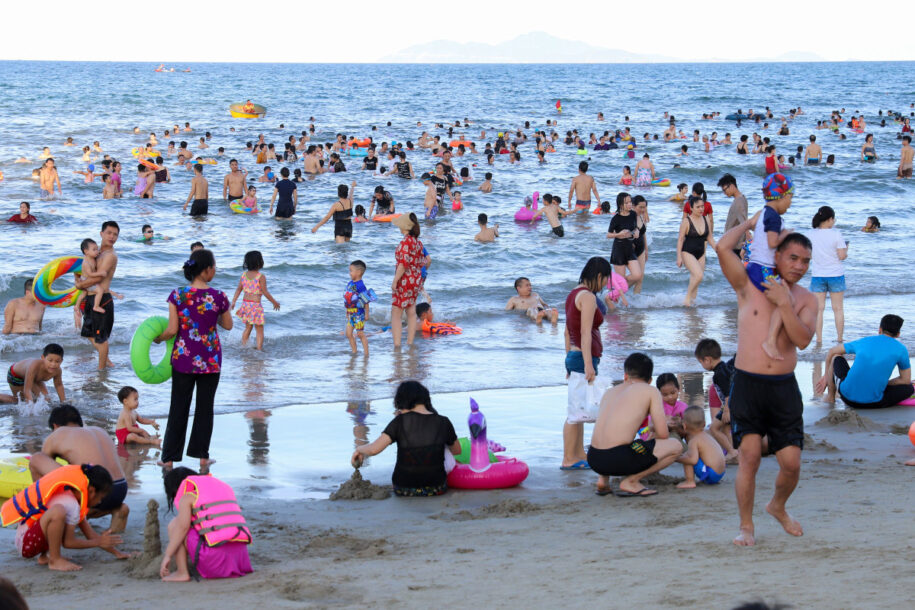





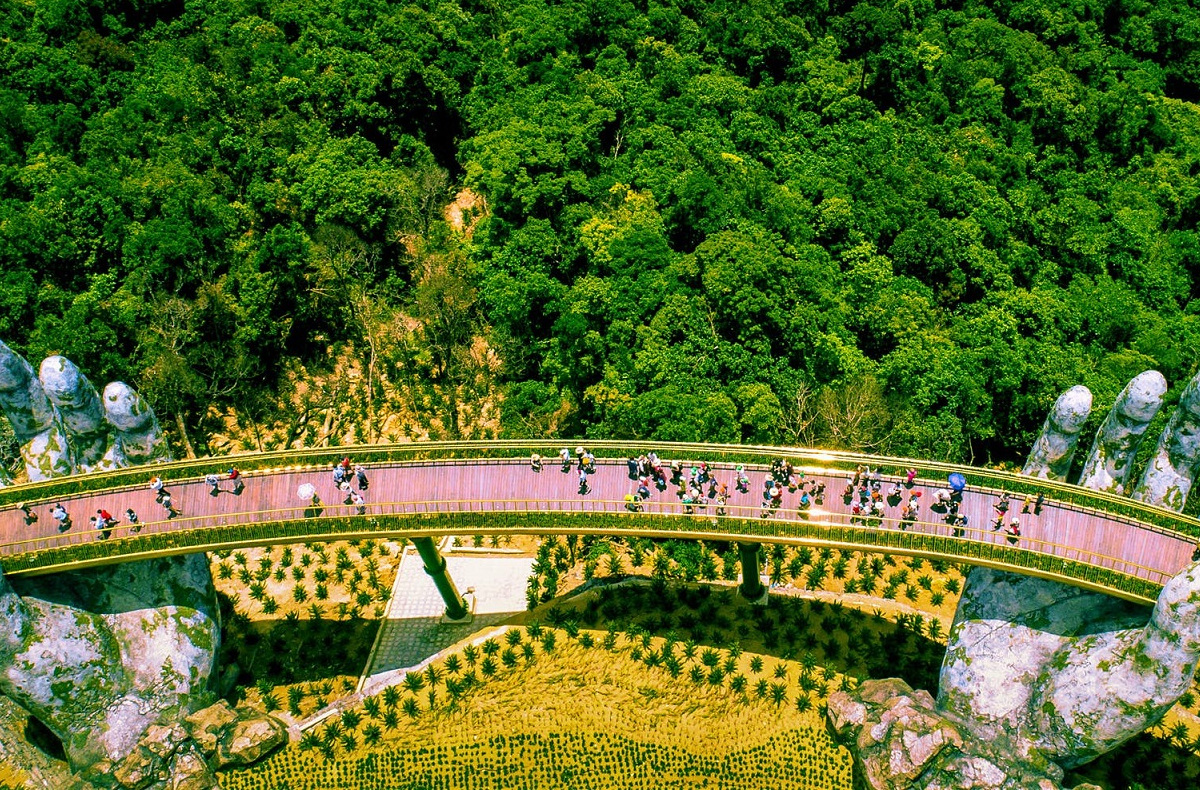






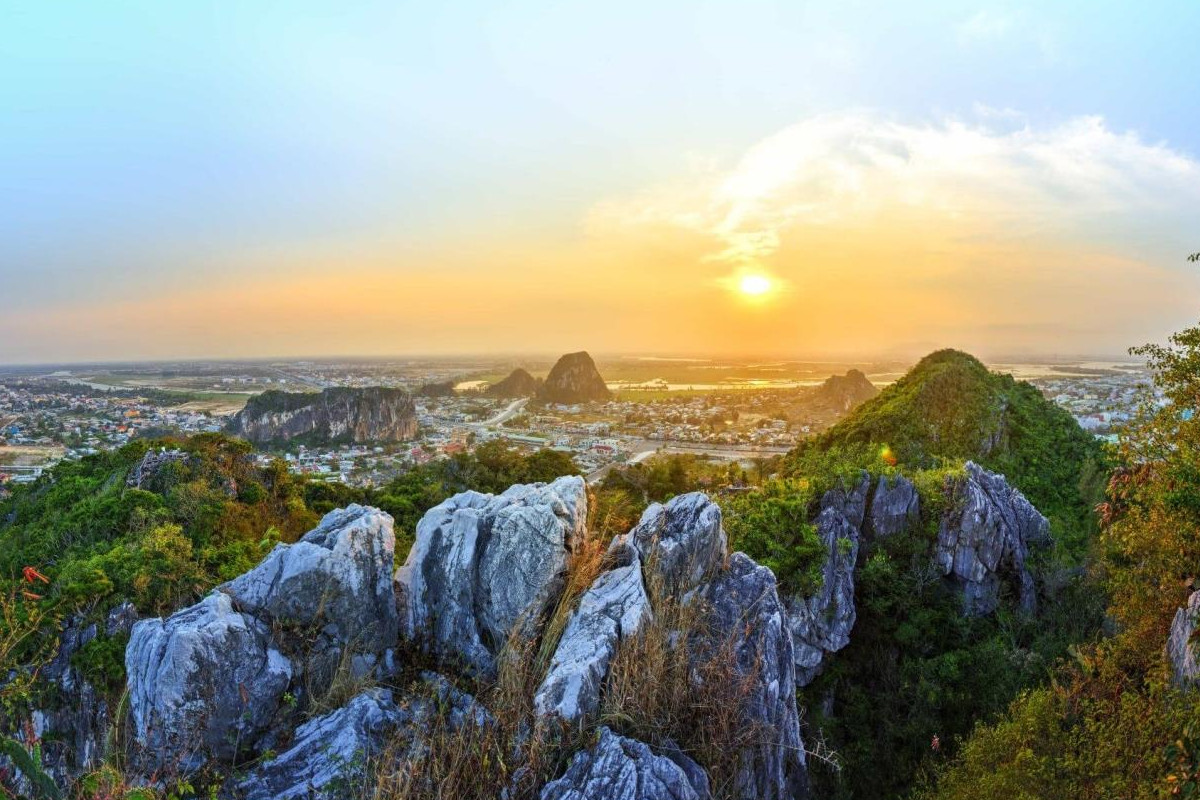




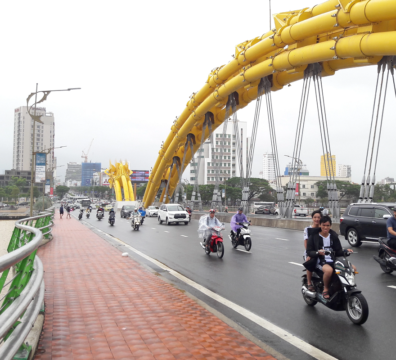



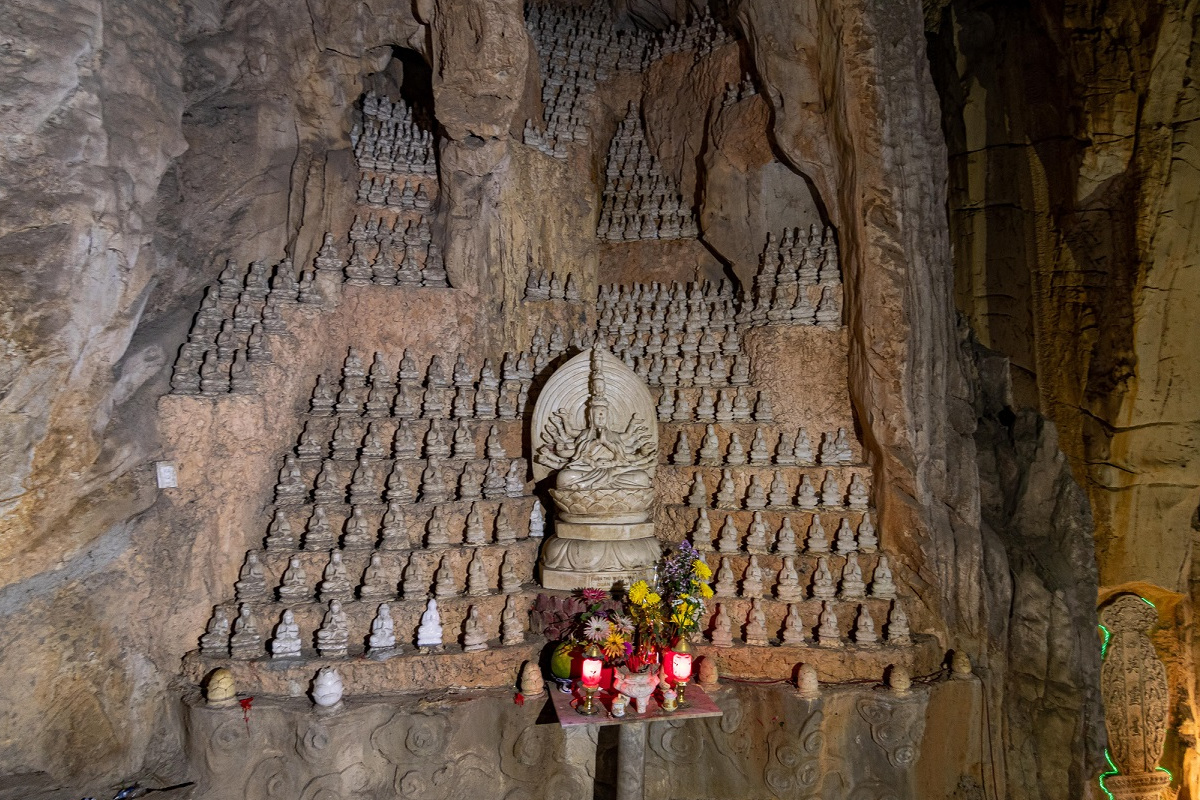









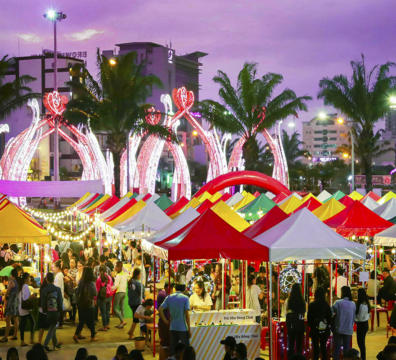















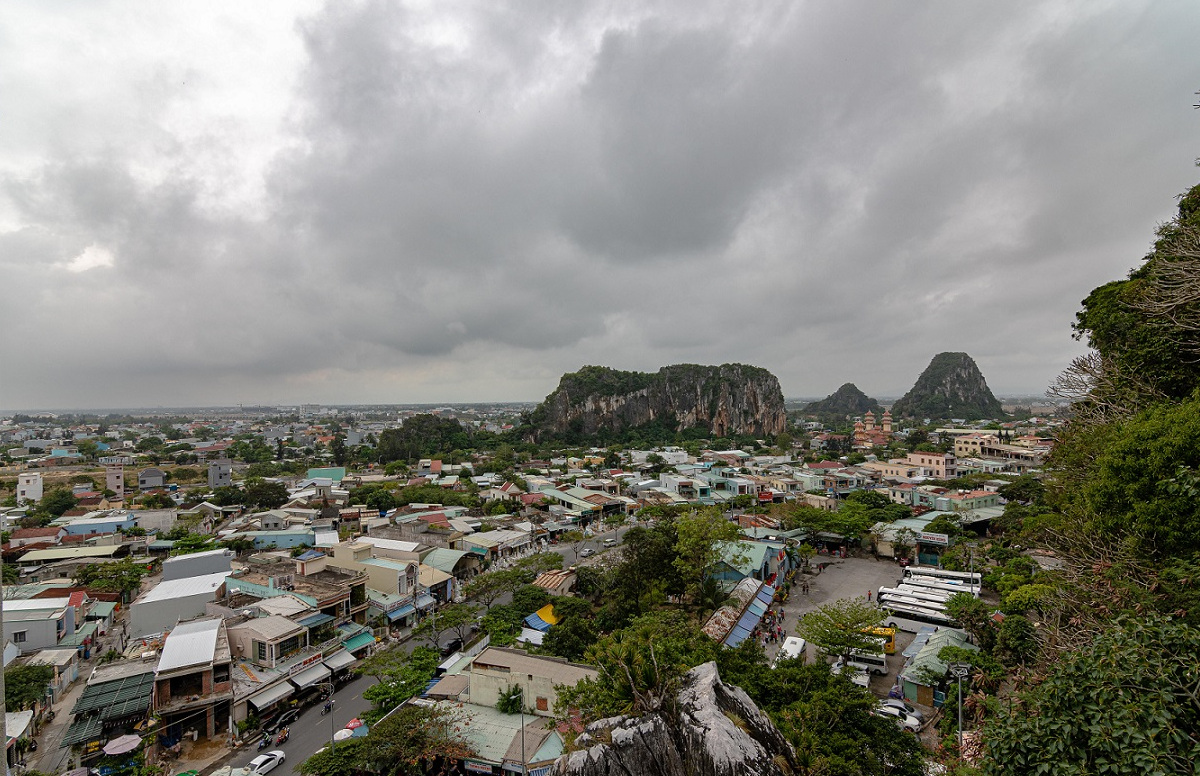

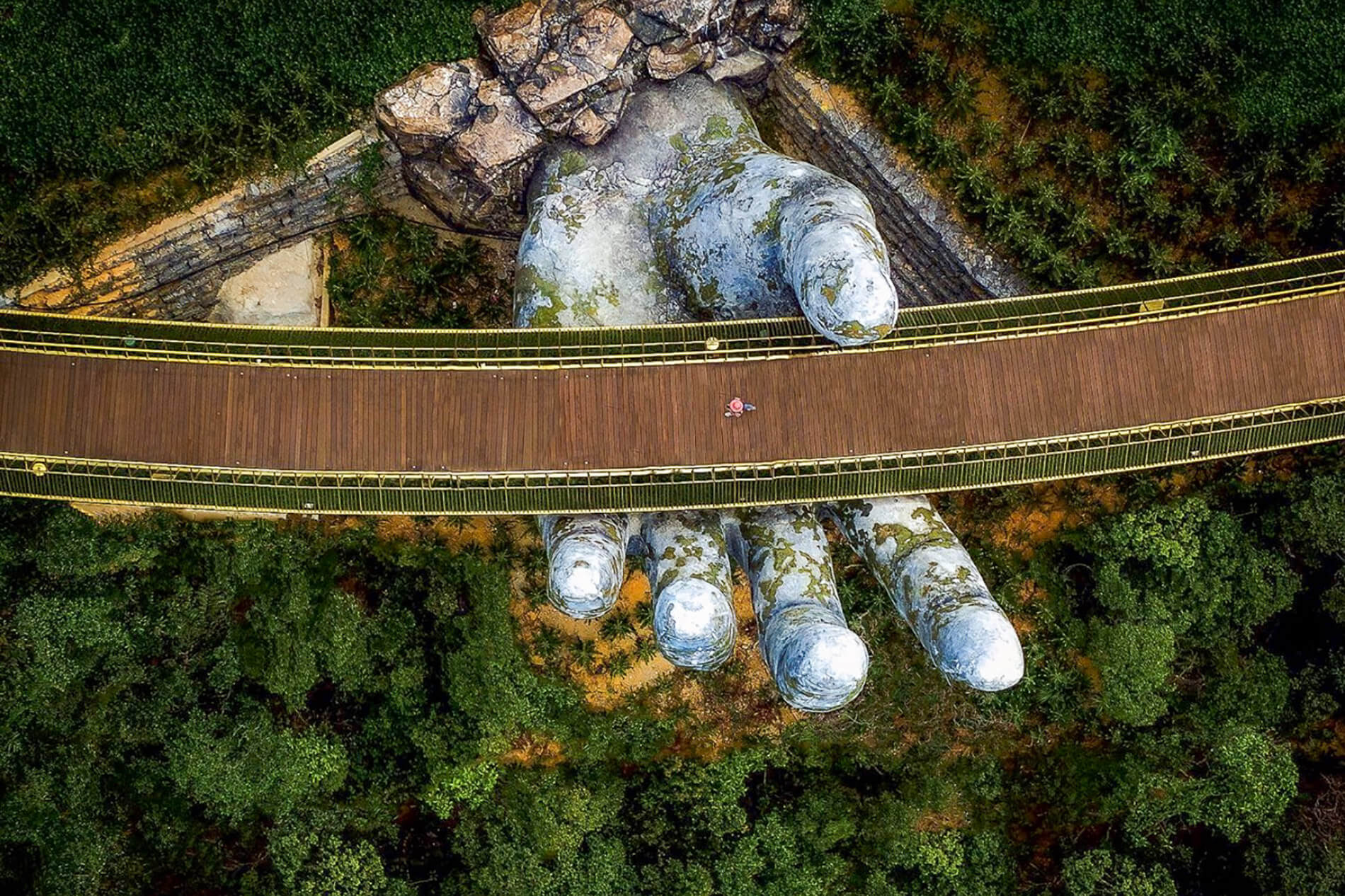

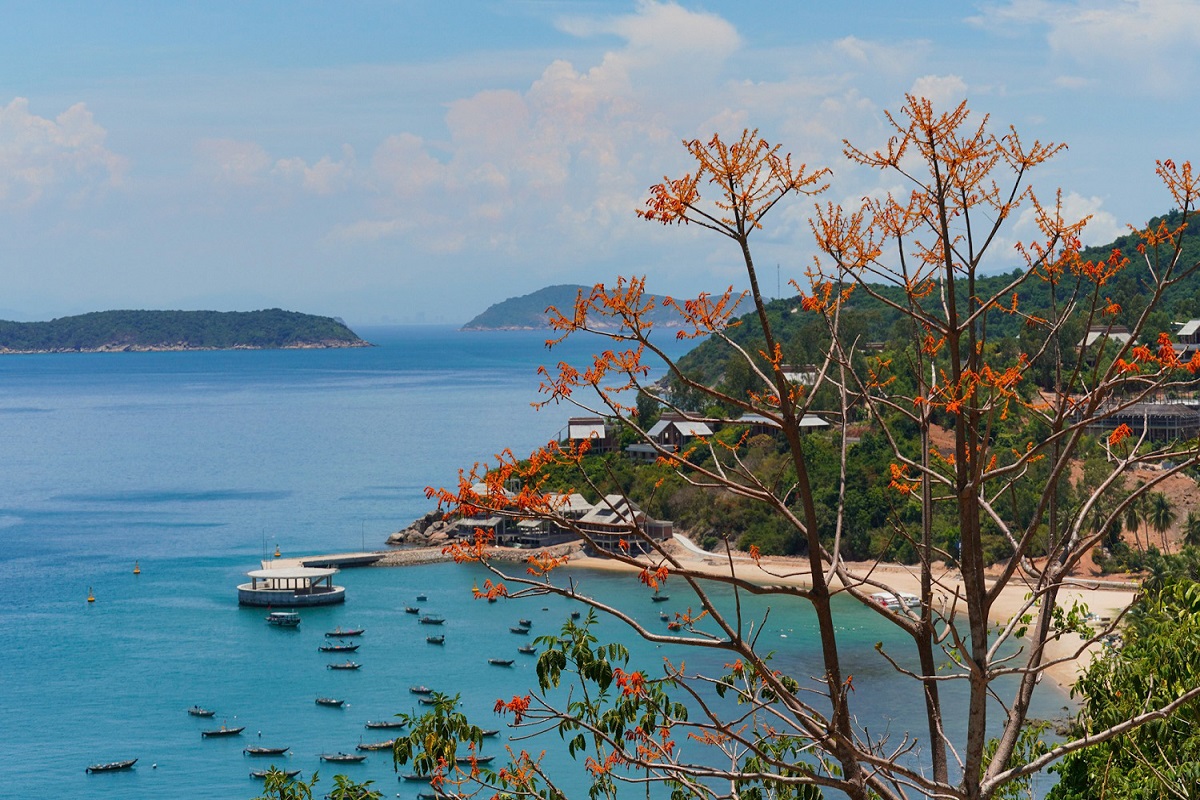






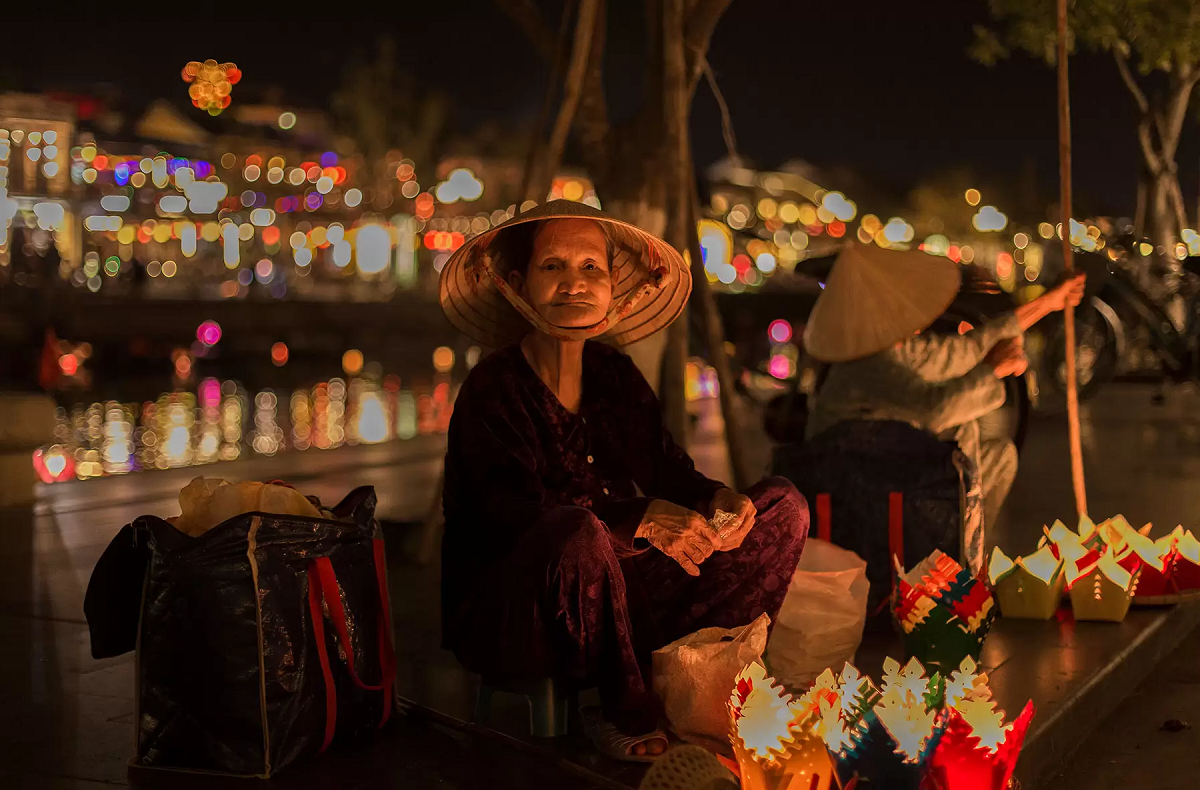

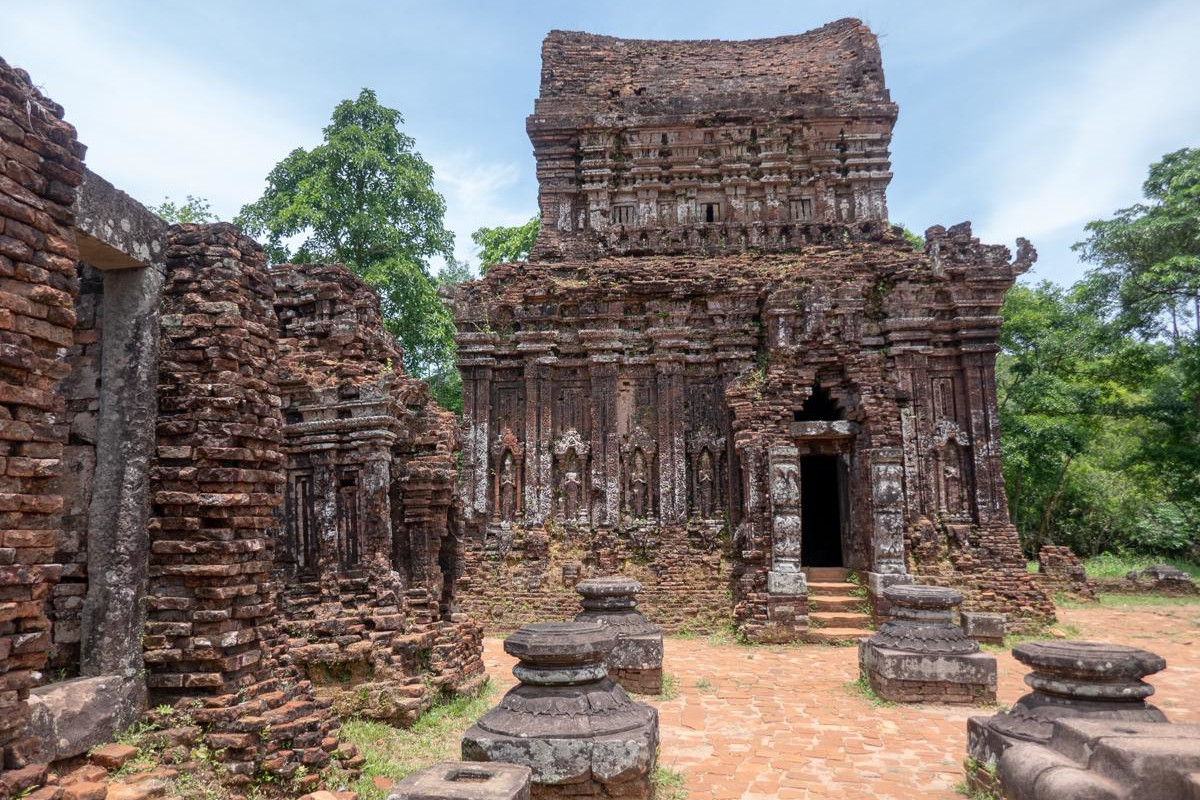

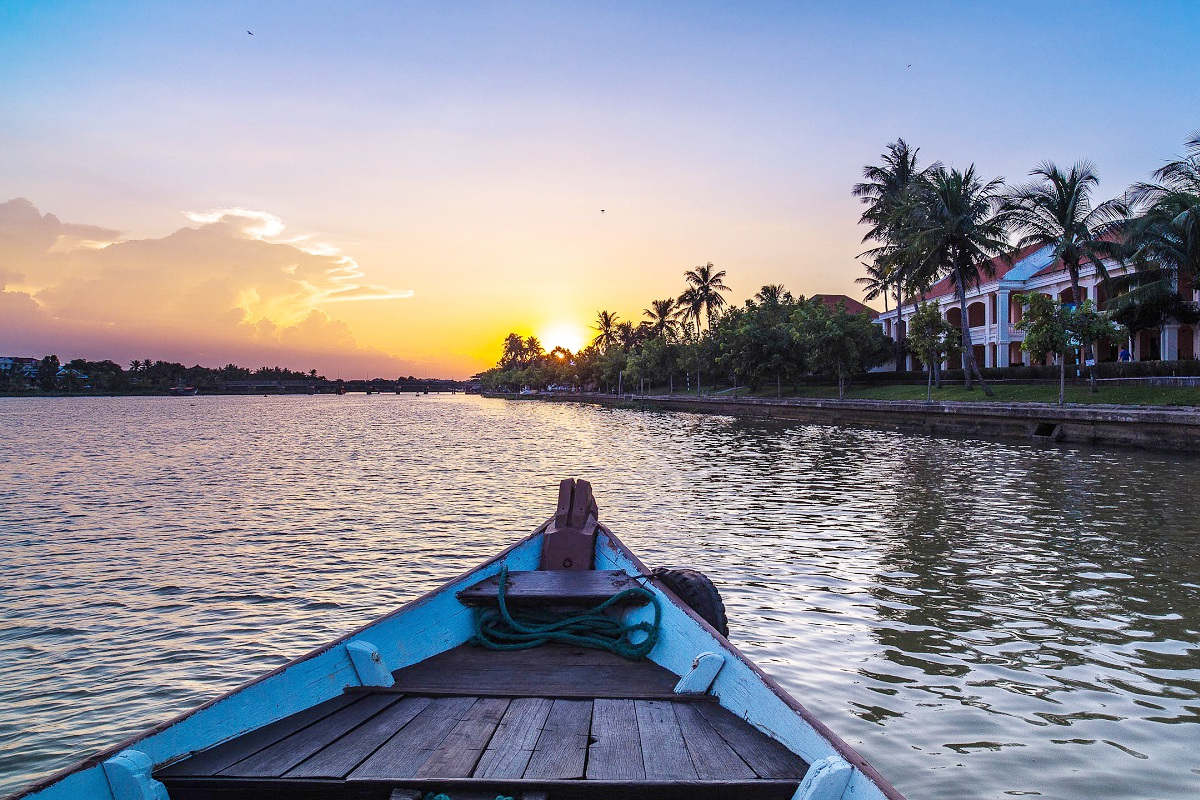





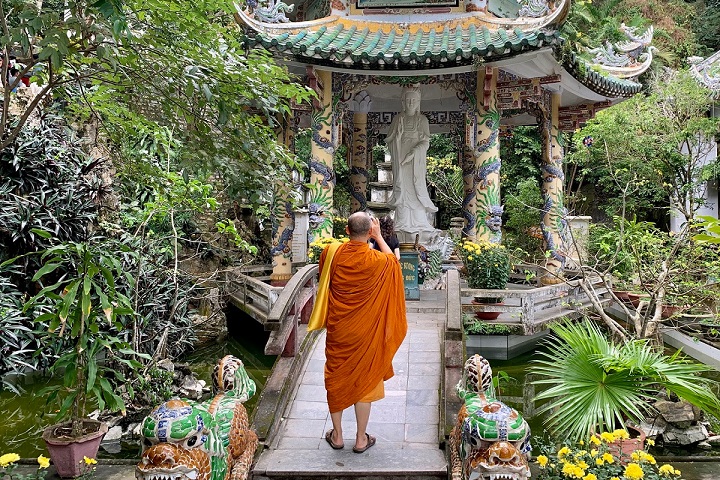












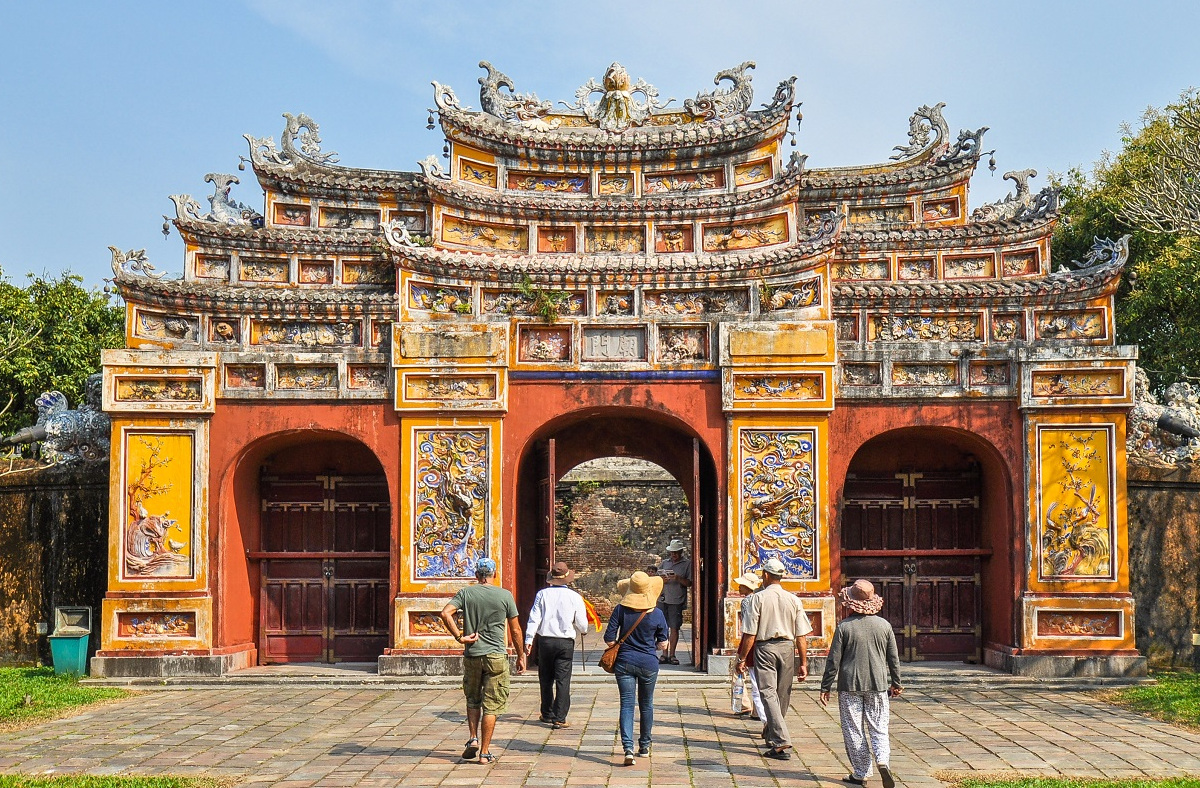








Leave a Reply